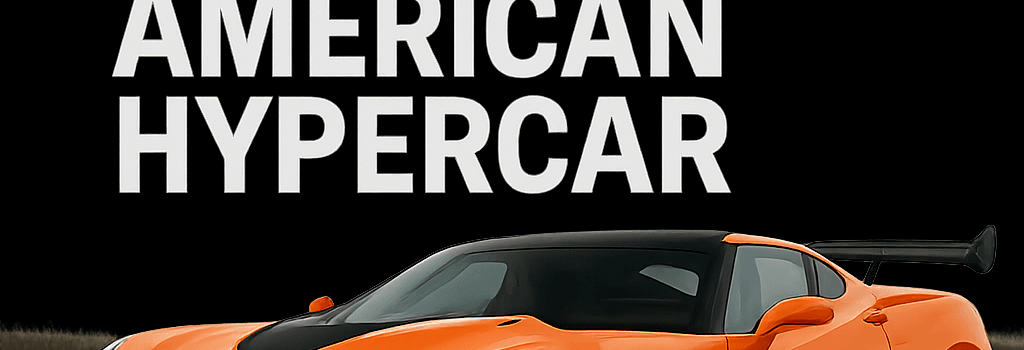Chevrolet Corvette ZR1X Hybrid: 1,250 hp American Hypercar

At the dawn of the mid-engine Corvette era, Chevrolet shocked the supercar world with the 1,064 hp ZR1. Now, the manufacturer is raising the bar further with the ZR1X hybrid, a 1,250 hp all-wheel-drive hypercar aimed squarely at Ferrari’s F80, McLaren’s W1 and the next-gen Porsche. Unveiled at a private media event in Austin, Texas, the ZR1X marries the ZR1’s twin-turbo V8 with an advanced front electric motor, delivering sub-two-second 0–60 mph sprints and a 233 mph top speed.
Powertrain and Performance
Building on the C8 Corvette’s backbone architecture, the ZR1X integrates a 5.5-liter LT7 twin-turbo V8—tuned to 1,064 hp (783 kW) at 7,000 rpm and 980 lb-ft (1,329 Nm) of torque—with a 186 hp (132 kW), 145 lb-ft (196 Nm) front electric motor. The 1.9 kWh lithium-ion battery pack now features higher-capacity cells and optimized thermal management, boosting energy density by 26% over the E-Ray’s system.
Key Technical Specifications
- Combined Output: 1,250 hp (919 kW) @ 7,000 rpm
- Torque: 980 lb-ft (V8) + 145 lb-ft (electric)
- 0–60 mph: < 2.0 s (all-wheel drive launch control)
- Top Speed: 233 mph (375 km/h)
- Battery: 1.9 kWh Li-ion, 26% increased capacity
- Brakes: 16.5″ carbon-ceramic rotors, 10-piston Alcon calipers
- Weight: ~4,000 lbs wet (coupe); up to 4,500 lbs (convertible)
Aerodynamics and Cooling Innovations
Chevrolet’s engineers have equipped the ZR1X with a bespoke low-drag aero kit. Continuous-weave carbon-fiber elements—including a deployable rear wing, front splitter and underbody diffusers—optimize downforce while minimizing drag. An array of NACA ducts, roof scoop and venturi tunnels channel airflow through 13 separate radiators, intercoolers and an e-motor charge cooler. Computational fluid dynamics (CFD) simulations and wind-tunnel testing reduced lift by 40% over the Z51 Stingray, ensuring stability at 233 mph and improved brake cooling during repeated high-G stops.
Advanced Hybrid Powertrain Engineering
The ZR1X’s hybrid control unit leverages machine-learning algorithms developed in GM’s Performance Data Recorder platform. These calibrations address the torque-vectoring challenges first seen on the E-Ray, where abrupt front-axle regen could induce reverse torque steer. New traction and stability logic factors in tire deformation data from high-speed camera arrays, preventing sensor oscillations under hard acceleration. Modes include:
- Tour: Balanced EV assist and V8 response.
- Sport: Aggressive regen and torque-vectoring.
- Endurance: Thermally regulated for track days.
- Qualifying: Maximum power, limited regen for peak lap times.
- Push to Pass: Instant 1,250 hp boost at 200 A peak current draw.
“We’ve set torque limits in first and second gear to protect the driveline, but drivers will never feel held back,” explained Josh Holder, Chief Engineer for Corvette Powertrains.
Market Positioning and Competitive Analysis
With a projected MSRP under $200,000, the ZR1X undercuts European rivals by 40–50%. Industry analysts at CarTech Insights note that the hybrid hypercar segment is heating up as emissions regulations tighten globally. “Chevrolet’s ZR1X is a watershed moment,” says Elena Morales, a senior analyst. “It proves that an American brand can deliver hybrid performance without a six-figure price premium.”
Rivals like Ferrari and McLaren continue exploring plug-in hybrid architectures—Ferrari’s forthcoming F80 will feature a PHEV system targeting 1,100 hp, while McLaren’s upcoming W1 aims for 1,200 hp with solid-state cells. The ZR1X’s simpler, performance-oriented hybrid strategy may offer a competitive edge in weight, packaging and track readiness.
Future Outlook and Sustainability Considerations
Although the ZR1X prioritizes performance over electric range—likely under 5 miles in full-EV mode—it represents Chevrolet’s commitment to keeping the ICE Corvette alive. GM sources indicate ongoing R&D into higher-capacity batteries and dual-motor rear e-axles, which could unlock 1.5 s 0–60 mph times by 2027. Regulatory headwinds in Europe and California will shape the lifespan of internal-combustion Corvettes, but for the moment, the ZR1X stands as a testament to allied ICE and electric drives.
Deliveries of the ZR1X begin in late 2025, with production volumes capped at 500 units worldwide. Expect record-breaking performance runs later this summer as Chevrolet targets Nürburgring, Pikes Peak and Bonneville.